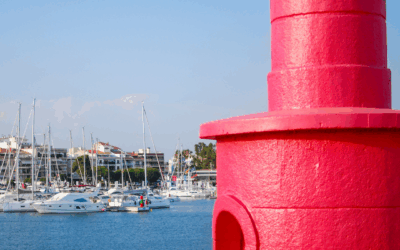In the heart of Conca de Barberà, in the province of Tarragona, stands the majestic Tossal de la Creu, a 731-metre high mountain that offers a unique experience for lovers of nature and tranquillity. This enclave, surrounded by Mediterranean landscapes, invites you to disconnect from the daily hustle and bustle while enjoying panoramic views that range from the vineyards of the region to the surrounding mountains. Its natural environment is ideal for hikers and those looking for moments of connection with the environment.
The Tossal de la Creu is not only an exceptional viewpoint, but also a spot steeped in history and culture. The Conca de Barberà region is known for its rich heritage, with gems such as the World Heritage Site of Monastery of Poblet and Milmanda Castle.
Whether you are looking for an unforgettable hiking route, to discover the richness of Tarragona’s landscapes, or simply to enjoy a moment of peace, the Tossal de la Creu is a must-see destination. Shuttle2Sun puts at your disposal its shared transfer services and private transfer services, low-cost and sustainable, to get you to Tarragona and Costa Dorada, from Barcelona airport, Barcelona port, Reus airport, Girona airport and AVE Camp de Tarragona train station.
Viewpoint of Tossal de la Creu
Tossal de la Creu, just over half an hour from Tarragona and towns such as Salou, Cambrils and La Pineda, is known for its impressive viewpoint, a privileged place from which you can enjoy spectacular views over the Conca de Barberà and the Monastery of Poblet.
This viewpoint offers an unrivalled panoramic view that allows you to observe the majesty of one of the most emblematic monastic complexes in Catalonia. From here, you can see the imposing silhouette of the church of Poblet, surrounded by woods and vineyards, creating a fascinating contrast between the medieval architecture and the surrounding nature.
The panoramic view from the Tossal de la Creu not only offers a panoramic view of the Cistercian monastery, but also the surrounding valley, with its fields and the mountains that delimit the region.
From this point, you can see the Barranc de Sant Bernat, Les Masies de l’Espluga de Francolí, the Serra de Viloví and the Serra del Tallat, among other geographical enclaves.
This viewpoint has become a meeting point for hiking enthusiasts, who can enjoy routes that lead to this privileged spot. It is a perfect spot for meditation and reflection, ideal for those who wish to connect with the history and nature of the region.

Monastery of Poblet
The Monastery of Poblet, located at the foot of the Tossal de la Creu, is one of the most important examples of Cistercian art in Europe and a symbol of Catalonia’s historical and spiritual heritage. Founded in the 12th century, the monastery has witnessed the historical evolution of the region, serving as a religious, cultural and economic centre for centuries. Its impressive Romanesque architecture, with its imposing abbey church and perfectly preserved monastic buildings, reflects the austerity and community spirit of the Cistercian order.
The monastery is also a place of peace and seclusion, where visitors can explore its tranquil cloisters, gardens and church, which houses magnificent frescoes and tombs of the monarchs of the Crown of Aragon, such as Pedro III the Ceremonious and his father, Jaume I the Conqueror.
If you want to know more about the presence of the Cistercian order in Catalonia, don’t miss our last article ‘Discover the three most important Cistercian monasteries in Catalonia, with the Cistercian Route’. Remember also that you can get to Tarragona and Costa Dorada, with Shuttle2Sun‘s shared transfer services and private transfer services, low-cost and sustainable, from Barcelona airport, Barcelona port, Reus airport, Girona airport and Camp de Tarragona AVE train station.

Milmanda Castle
Milmanda Castle, strategically located in the hills of Conca de Barberà, in the municipality of Vimbodí i Poblet, is an outstanding example of medieval defensive architecture in Catalonia in the 12th century.
However, the structure we can see today is the result of modifications that took place in the 14th and 16th centuries, following the Gothic style of the period.
The castle, which was originally a defensive fortress, has typical medieval architectural elements, such as its keep and the surrounding walls. It is also worth noting that under its foundations are the archaeological remains of a settlement that reveals the Iberian, Greco-Phoenician and Roman past of the area.
Magnesia Fountain and the Abat Siscar Fountain
Another outstanding enclave that we can visit from the Tossal de la Creu is the Magnesia Fountain, in the centre of Les Masies at l’Espluga de Francolí, discovered due to the presence of several ferruginous springs in the area, around the 19th century.
The spring owes its name to the high concentrations of magnesium present in its waters, which makes them particularly beneficial for health.
The exploitation of these mineral waters led to the construction of several spas for the relaxation of the Catalan bourgeoisie, who took advantage of the quality and therapeutic properties of the water from these springs. Today, although the old spas have closed, the Magnesia Spring remains a point of interest from both a natural and historical point of view, offering a glimpse of how the natural resource of water was an engine of development for the region.
The Abat Siscar Fountain is another outstanding example, as it shares similar characteristics with the Magnesia Fountain, offering ferruginous waters that contain therapeutic and healing properties. The name of the fountain pays homage to Abbot Siscar, Abbot of Poblet. It has three spouts through which the water flows, in the shape of a dragon’s head, with a sign above it indicating the two minerals: iron and magnesium.
Dare to visit all these places around the Tossal de la Creu of Vimbodí i Poblet and discover all its secrets at first hand. Remember that with Shuttle2Sun‘s shared transfer services and private transfer services, low-cost and sustainable, you can get to Tarragona and Costa Dorada, from Barcelona airport, Barcelona port, Reus airport, Girona airport and Camp de Tarragona AVE train station.



